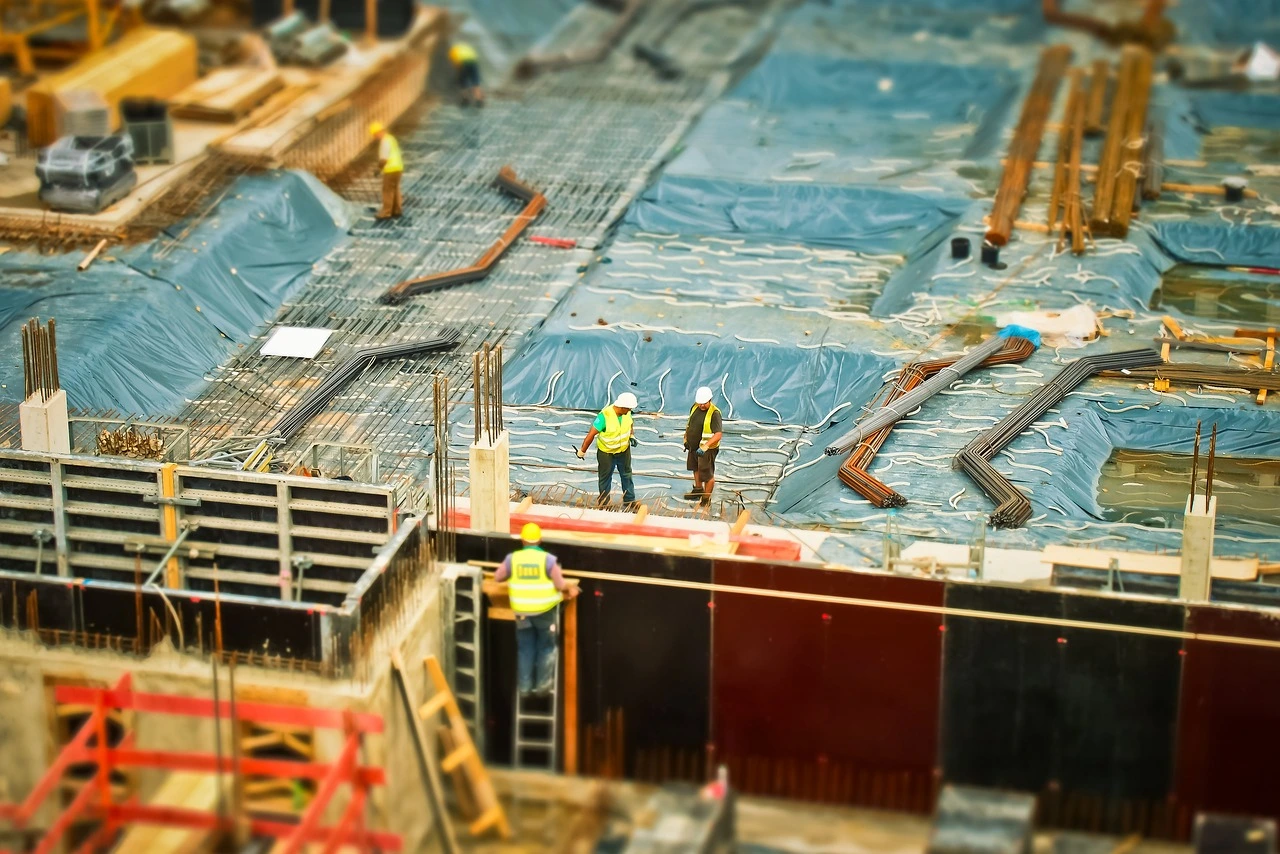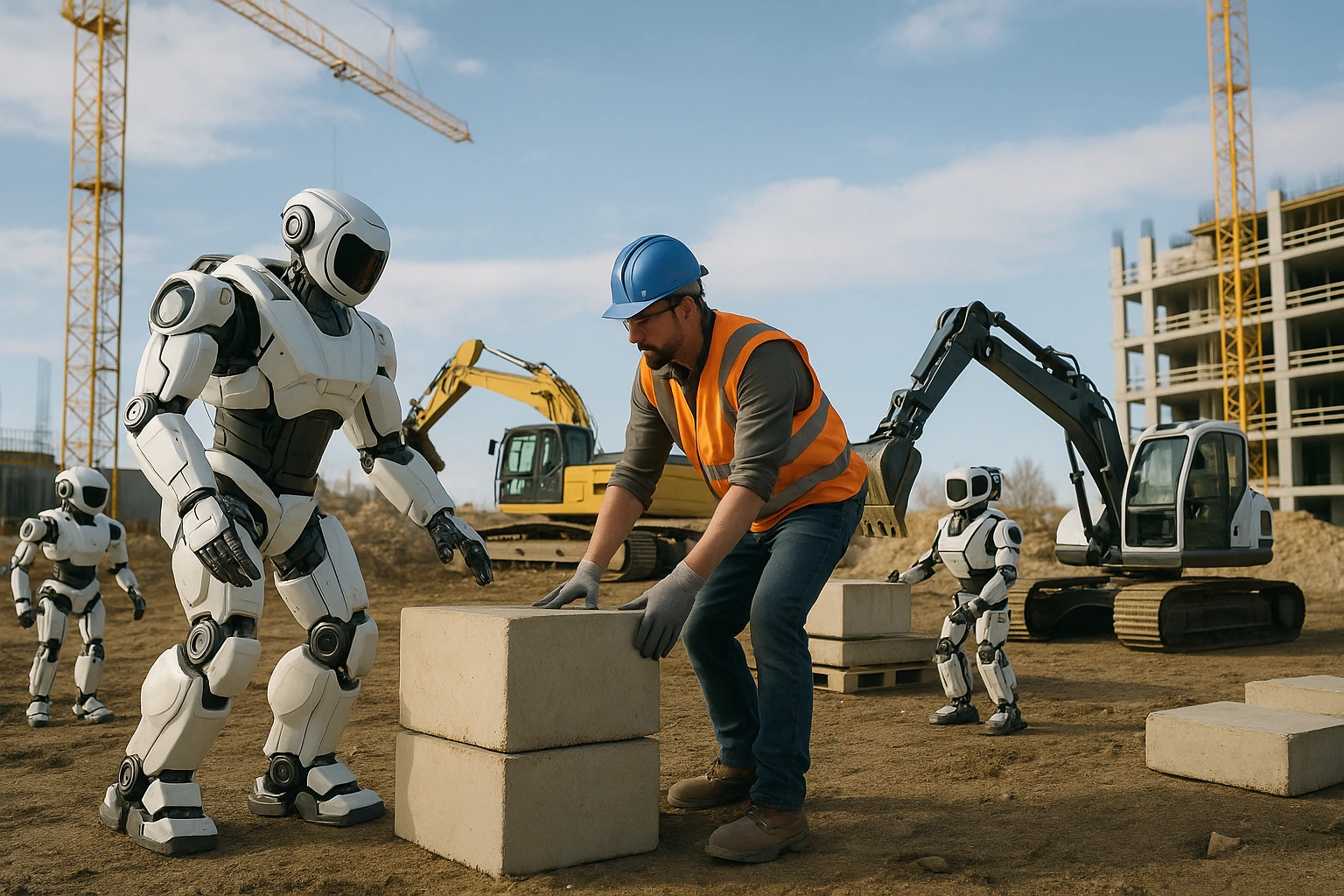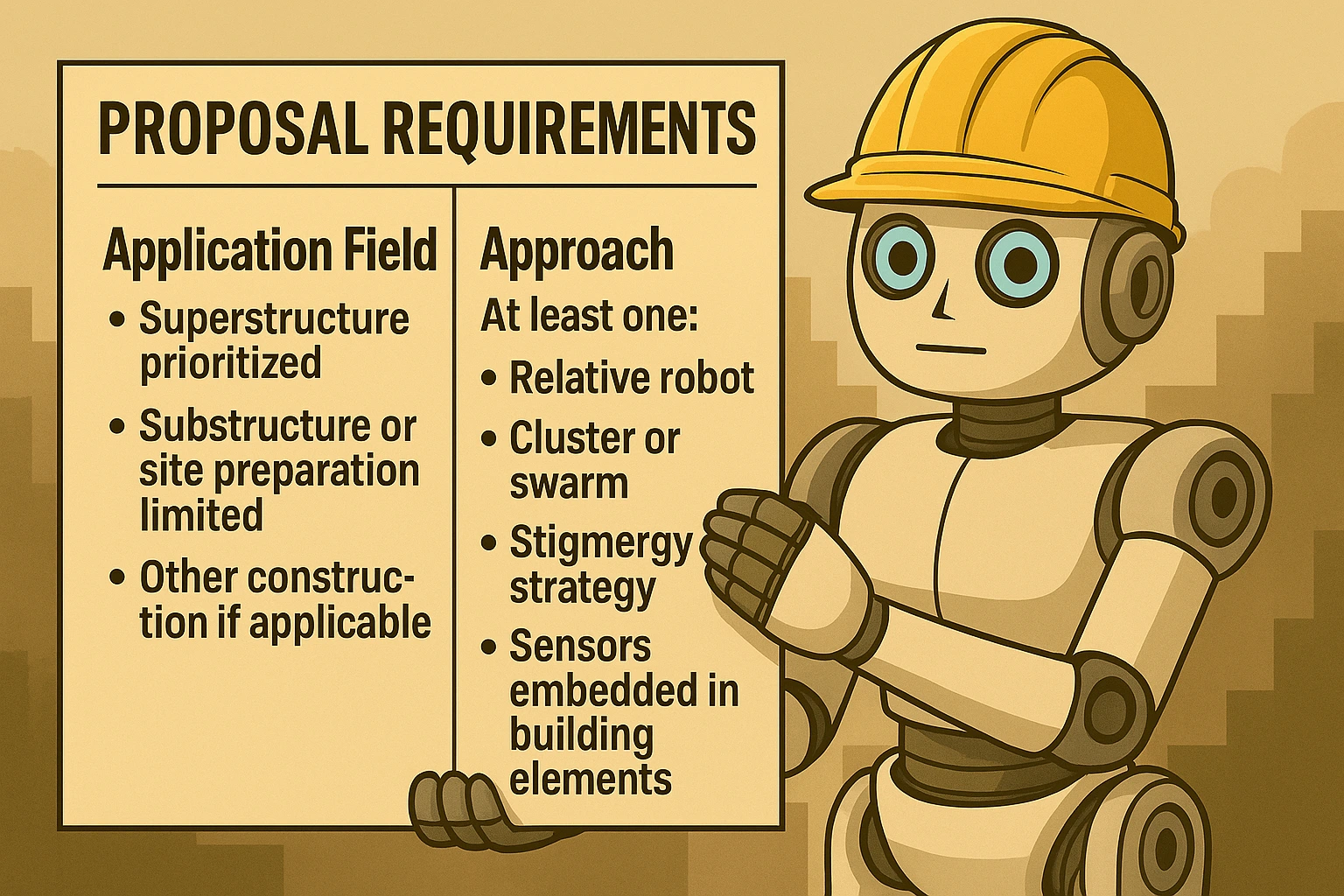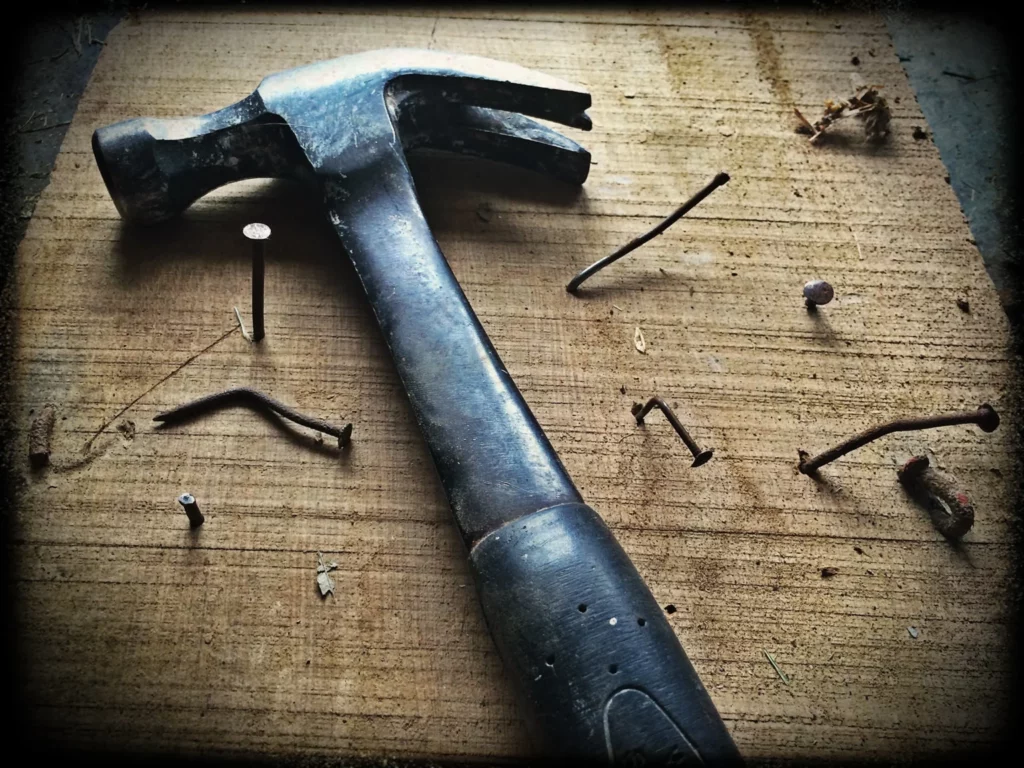EIC Pathfinder Challenge 3
Towards autonomous robot collectives delivering collaborative tasks in dynamic unstructured construction environments
EIC Work Programme reference
HORIZON-EIC-2025-PATHFINDERCHALLENGES-01-03
Call deadline
October 29, 2025
Publication Date
April 29, 2025
Keywords
Construction robots
mobile multi-robotic platform
Building systems
distributed swarms
Your microfluidic SME partner for Horizon Europe
We take care of microfluidic engineering, work on valorization and optimize the proposal with you
Introduction to EIC Pathfinder Challenges
The EIC Pathfinder program supports early-stage, high-impact scientific and technological research with the potential to disrupt existing fields or create entirely new ones. It operates through two main funding streams: EIC Pathfinder Open, which welcomes proposals from any area of science or technology without thematic restrictions, and EIC Pathfinder Challenges, which focus on specific themes with clear objectives, encouraging a portfolio of complementary projects. The Challenges are designed to promote high-risk, high-reward research through collaboration, aiming for transformative results through diverse approaches.

In 2025, the EIC Pathfinder Challenges have an indicative budget of €120 million, evenly split across four themes, each expected to fund 7 to 10 projects with grants of up to €4 million. These projects typically last 3 to 4 years and are often conducted by international consortia of three or more partners, though smaller or solo efforts are also eligible. The program is highly competitive, with a success rate of 7.7% in 2024, and funded projects must align with the Challenge goals, participate in joint activities, and adapt collaboratively as research progresses.
If you are interested to learn more about the general eligibility criteria, we recommend that you have a look at the EIC Programme 2025.
Deadline for application is the 29th of October 2025!
What is the Challenge on construction robots about?
On-site construction robotics presents a major frontier in automation, facing unique challenges due to the dynamic, unstructured nature of construction environments and the necessity to operate safely alongside human workers. Current efforts focus on automating traditional diesel-powered machines but fall short of addressing deeper issues like labor shortages and low productivity. True progress requires adaptable, collaborative robotic systems, such as distributed swarms, that can work together and alongside humans efficiently.

The transformation of construction relies on replacing legacy equipment with electrified, intelligent robotic systems. This shift enables scalable, precise, and sustainable technologies, supporting a fully digital process where modular components are made off-site and assembled by autonomous construction robots. It promises lower emissions, better efficiency, and more affordable buildings while valuing safe human-robot collaboration. The Pathfinder Challenge embodies this vision by targeting the full spectrum of construction, from site preparation to structural assembly, while encouraging the development of technologies that make autonomous, electrified, and collaborative construction robots a practical reality.
More information on the EIC Pathfinder Challenge 3 can be found on the official page of the European Commission.
How can microfluidics help with your project?
Microfluidics-based hydraulic control offers a lightweight and energy-efficient alternative to traditional heavy hydraulic systems, enabling robots to precisely manipulate large construction elements without risking damage or misalignment. Beyond motion control, integrated microfluidic systems can also manage the targeted delivery of adhesives, sealants, and coatings, allowing robots to bond and assemble modular structures accurately. Together, these capabilities enhance both the mechanical precision and the material handling needed for high-quality, autonomous construction.

The MIC as the perfect SME partner
SMEs are essential drivers of innovation in Horizon Europe projects, enabling the translation of advanced research into scalable, real-world solutions. With deep expertise in microfluidics and precision control technologies, we are well-positioned to support the development of next-generation autonomous collaborative construction robots.
Our contributions include microfluidic-based hydraulic systems for fine-tuned robotic manipulation, precision fluid delivery platforms for bonding and assembly, and smart integration with multi-robot coordination systems. These technologies enable automated, adaptive control of pressure, flow, and material deposition; critical capabilities for building reliable, scalable, and digitally integrated construction systems in line with the EIC Pathfinder Challenge 3 objectives.
Objectives of the call
This Challenge aims to develop breakthrough technologies for autonomous collaborative on-site construction robots and create an integrated digital production and assembly chain designed for robotics. The Challenge focuses on three main construction tasks in buildings and infrastructure, with potential applications in adjacent segments like coastal protection foundations.
The first objective is to develop a simplified structural, load-bearing, material-robot building system to construct a representative structure, such as a pavilion, using discrete modules (elements, segments, blocks). This system must reach TRL4 (validation in a laboratory environment) and demonstrate scalability to real-world sizes. The system should include design-for-robotic-assembly aspects, like robot-material interfaces and module connectors, and be accompanied by a virtual assembly process simulation.

The second objective is to create an autonomous mobile multi-robotic platform with at least two collaborative construction robots for the assembly tasks. This platform should undergo a structured system analysis to define functions shared between robots and humans, ensuring safe and effective collaboration. The design must also consider how the technology can scale for future commercial use.
The third objective is to demonstrate the assembly sequence of the building system, using the multi-robotic platform, in a laboratory setting. Tests should explore the system’s resilience under unstructured, real-world conditions. The Challenge aims to advance off-site modular production combined with on-site autonomous assembly, excluding tasks like material 3D printing.

What are the expected outcomes and impacts?
This Challenge supports the European Green Deal, the European AI Strategy, and the Horizon Europe strategic plan for digital and green transitions in construction.
EIC Pathfinder Challenge 3 aims to address labor shortages, boost productivity and safety, and promote a shift toward off-site fabrication with on-site assembly, helping lower emissions, reducing costs, and supporting circular and affordable construction initiatives. Focusing on mobile collaborative construction robots to assemble the building elements, the Challenge expects the combined impact of funded Pathfinder projects to surpass individual efforts, encouraging knowledge exchange in areas like environment mapping, manipulation, swarm coordination, and commercialization.

Projects in the portfolio will collectively collaborate on performance metrics and public engagement to speed up industry adoption.
The objectives of all proposals will be mapped according to two categories (application fields and approach), sub-categories, and domains:
| Category: Application fields | |
| Sub-categories | Domains |
| Superstructure | Pavilion, tower, arch, slab-beam-column, vault, shell, space frame |
| Infrastructure | Bridge, tunnel, culvert, road, channel |
| Substructure | Anchoring, piling, footing, slabs, walls |
| Site preparation | Surveying, earthmoving, scraping, scooping, trenching, stabilization |
| Other construction | Coastal erosion protection, energy infrastructure, emergency shelter, desertification mitigation |
| Category: Approach | |
| Sub-categories | Domains |
| Type of robot | Adopted legacy mobile equipment, absolute, relative, ground-based, climbing, cable-driven, and end-effectors |
| Number of agents | Dyad, triad, quartet, team, cluster, swarm, uniform general-purpose, pluriform task-specific, and human agents |
| Goal setting strategy | Centralized, decentralized, hybrid, stigmergy, autonomy level |
| Stability during construction | Use of temporary support elements, resilience strategy |
| Multi-modal sensors | Camera, motion, force, sonic, range, magnetic, sensors embedded in building elements |
| Discrete building elements | Blocks, voussoirs, modules, beams, piles, fibers |
| Discrete building element fixation | Connectors, fasteners, topologically interlocking, adhesive |
| Target type of environment | Benign on-site, disaster scenario, hostile environment, existing building |
| Integration level of material-robot system | None, added functionality, critically integrated |

Download the MIC Horizon Europe 2025 Calls Calendar:
We are also happy to join your research consortium as an SME partner for other topics. Calls that we are particularly interested in are:
The MIC already brings its expertise in microfluidics to the EIC Program:
FAQ - EIC Pathfinder Challenge 3: Autonomous collaborative robots
What’s the budget per project?
Up to EUR4 million over 3-4 years. A EUR30 million envelope will be used to fund seven or ten projects.
And what is essentially new in this?
In lieu of single machine which is automated, there is the use of distributed robotic swarms which operate in unstructured construction settings in collaboration with human beings.
This is because of modular off-site production.
This renders the robotic task manageable. It is solvable to autonomously assemble discrete elements; it is very intractable to autonomously manufacture out of raw materials.
What does TRL4 actually mean?
Validation in real societal environment. You have to construct something physically, normally a pavilion, to demonstrate that your robots can deal with actual loads, tolerances and coordination issues.
What is the reason to require multi-robot platforms?
Scale and resilience. Distributed collectives make parallel operations, and help each other when failed and graceful degradation possible. This flexibility can not be achieved with single sophisticated machines.
How does microfluidics help?
Compact hydraulic control substitutes the heavy traditional control, and with it it allows fine control of large parts. The integrated channels provide adhesives with precision of micron-level-macro-level precision.
What’s the success rate?
EIC Pathfinder averaged 7.7% in 2024. Competition is brought even more to challenge calls. Aim high scrutiny in terms of excellence, impact and implementation criteria.
Who should lead proposals?
Consortia containing robotics, structural engineering, sensor fusion and most importantly industrial partners knowledgeable of the real construction processes and regulation conditions.
What do you consider the most important things in preliminary work?
Physical demonstrations. Simulation even with two robots is not as important as coordinated manipulation with two robots. Environmental robustness understanding is determined by real sensor testing in dusty, variable-lighting conditions.
So what is portfolio coordination?
Funded projects cooperate with each other by being required to have joint workshops, performance indicators and joint stakeholder interest. Your strategy will be contrasted with other financed plans.
Can solo applicants apply?
Yes technically, although the consortia of three or more partners are common. Multi-partner proposals are highly suited in the collaborative construction environment.
But what about the collaboration of human and robot?
Essential, not optional. It has to be in your system thoroughly analyzed, with functions shared between human and robot, which allows safe interaction in the construction sites which are dynamic.
What are the construction activities within scope?
Structural assembly: the site preparation, earthmoving, anchoring, superstructure construction, and infrastructure building. Practical excludes material 3D printing. In practice, discrete element assembly.
What do we consider to be building systems?
Arches, bridges, tunnels, foundations, coastal protection buildings. Has to be discrete modules: blocks, beams, segments, having connection interfaces.
Why exclude 3D printing?
Dissimilar technological maturity. Challenge focuses on the coordination and assembly of prefabricated materials instead of the in-situ deposition of materials.
What sensors are expected?
Multi-modal: cameras, force sensors, range finders, possibly magnetic sensors or integrating elements. Construction conditions in terms of perception robustness are a matter of concern.
To what extent must robots be autonomous?
Adequate in terms of group work. The difficulty permits the use of hybrid control strategies: centralized, decentralized or mixed, and different degrees of autonomy based on the complexity of tasks.
And what stigmergy in this regard?
Organizational coordination by environmental regulation. Robots drop physical or digital leave-taking signs directing group behavior without any communication- again, as distributed as construction.
Are there any proposals with gender equality plans?
Test the organizational requirements. Member states should have institutional gender equality plans in place in the public bodies, research organizations and the universities.
What regarding the electrification requirements?
The challenge is very clear because it is aimed at substituting diesel equipment with electrified robotic systems. The evaluation factors include energy efficiency and sustainability.
What is the level of relevance of scalability demonstration?
Very. There should be distinct access to real-world scale in your TRL4 system. The reviewers determine the validity of laboratory validation in practice at the construction site.
What is the competitive advantage of consortia?
Previous history of working together: common publications, common preliminary experiments, common prototypes. Cold alliances that come together to submit requests have little persuasiveness to the reviewers that they have real integration capabilities.
Is it worth reaching out to National Contact Points?
Absolutely. NCPs offer private browsing of proposals, pitfalls identification, and alignment of calls. Before they submit, their comments on the right content frequently eliminate fatal mistakes.
What happens after funding?
Projects are involved in portfolio activities, collaborate flexibly as research advances, make a contribution to aggregate performance measures, and are involved together with industry stakeholders to be adopted quicker.


